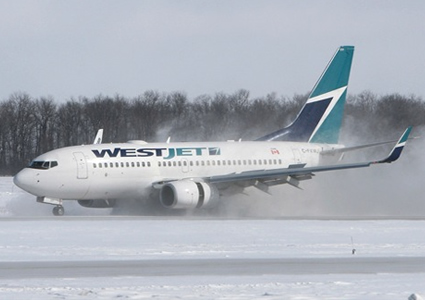WestJet CEO Gregg Saretsky mentions Cranbrook as possible new destination

— photo courtesy of WestJet
WestJet Airlines Ltd.’s plan to add smaller planes to its fleet will position the carrier to challenge Air Canada for the top spot in carrying domestic traffic within five years.
WestJet chief executive officer Gregg Saretsky said in a year-end interview that WestJet will focus on acquiring smaller aircraft for neglected domestic markets before considering larger planes for routes to Europe and Asia in the long term. Plans call for Calgary-based WestJet to move beyond its single-fleet configuration of Boeing 737s – workhorses for the carrier since it launched in 1996.
Industry observers say WestJet will have an advantage over Air Canada-affiliated regional operators that don’t have the fuel-efficient Q400, such as Central Mountain Air, which flies older turboprops configured to seat 18 or 30 passengers. Also on WestJet’s shortlist is the French-Italian ATR 72 turboprop.
“The Q400 would be ideal as a regional airplane,” Mr. Erickson said. “But I still think the end play will be WestJet’s entry into the international arena in the longer term. That would be transatlantic routes for starters, and at some point, transpacific, and the connecting passengers from smaller Canadian cities could assist with that.”
Mr. Saretsky emphasized that no corporate decision has been finalized on whether to order larger or smaller planes, but he favours nurturing the home market first. He cited examples of new destinations that could benefit from a WestJet expansion: Cranbrook, Prince Rupert, Fort St. John and Dawson Creek in British Columbia; Lethbridge, Alberta; Saguenay, Quebec; and Sudbury, Sarnia and Timmins in Ontario.





Comments